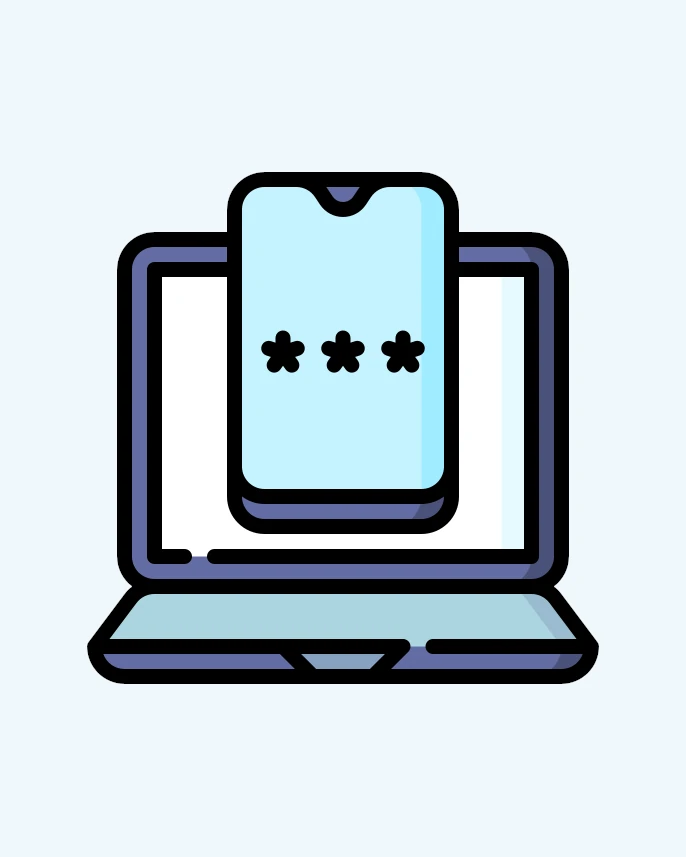In today’s interconnected world, securing our digital presence is of paramount importance. One method that significantly strengthens the security of online accounts is Two-Factor Authentication (2FA). 2FA provides an additional layer of protection beyond passwords, ensuring that only authorized users gain access to sensitive information. This article delves into the concept of Two-Factor Authentication, exploring its purpose, functionality, and benefits. Join us as we uncover the various methods of implementing 2FA and understand why it has become a crucial component of account security in the digital age.
Understanding Two-Factor Authentication (2FA)
Two-Factor Authentication (2FA) is a security mechanism that requires users to provide two different types of identification factors to access their accounts. These factors typically fall into three categories: something you know, something you have, or something you are. Let’s explore these factors in more detail:
- Knowledge Factor: This involves something the user knows, such as a password, PIN, or answers to security questions. It is the most common form of authentication but can be vulnerable if passwords are weak or easily guessable.
- Possession Factor: This involves something the user possesses, such as a physical token, smart card, or a one-time code generated by an authenticator app or sent via SMS. Possession factors provide an additional layer of security since physical access to the token or code is required.
- Inherence Factor: This involves something inherent to the user, such as biometric data like fingerprints, facial recognition, or voice recognition. Biometric authentication adds an extra level of security, as it relies on unique physical characteristics that are difficult to replicate.
Two-Factor Authentication combines two of these factors to establish a higher level of assurance and decrease the likelihood of unauthorized access.
The Importance of Two-Factor Authentication (2FA)
Two-Factor Authentication has become increasingly crucial in the digital age due to the following reasons:
- Enhanced Security: Passwords alone are no longer sufficient to protect accounts. 2FA adds an extra layer of security, significantly reducing the risk of unauthorized access. Even if a password is compromised, an attacker would still need the second factor to gain entry.
- Mitigation of Password-related Risks: Weak, reused, or stolen passwords are prevalent security risks. 2FA provides an additional safeguard, mitigating the impact of compromised passwords by requiring an additional authentication factor.
- Protection against Phishing Attacks: Phishing attacks attempt to trick users into revealing their login credentials. With 2FA, even if users unwittingly provide their passwords, the attacker would still require the second factor, preventing unauthorized access.
Methods of Implementing Two-Factor Authentication (2FA)
There are several methods available for implementing Two-Factor Authentication, catering to different user preferences and security needs:
- SMS-Based Verification: In this method, a one-time code is sent to the user’s mobile device via SMS. The user then enters this code along with their password to complete the authentication process. While convenient, this method is vulnerable to SIM swapping or interception of SMS messages.
- Authenticator Apps: Authenticator apps generate time-based one-time codes (TOTP) that users enter along with their passwords. These apps, such as Google Authenticator or Authy, are typically more secure than SMS-based methods as they are not susceptible to SIM swapping or interception.
- Hardware Tokens: Hardware tokens are physical devices that generate unique codes. These tokens, like YubiKey or RSA SecurID, provide strong security and are immune to phishing attacks or malware targeting software-based authentication methods.
Conclusion
As the digital landscape continues to evolve, Two-Factor Authentication (2FA) stands as a powerful defense against unauthorized access to sensitive information. By requiring users to provide an additional authentication factor, 2FA significantly enhances security, mitigates password-related risks, and protects against phishing attacks. Organizations and individuals alike must embrace and adopt 2FA to fortify their online accounts and preserve data integrity. As technology advances and cyber threats evolve, Two-Factor Authentication remains an essential component of comprehensive security strategies, empowering users to safeguard their digital identities and confidential information.
